#Professional Newsletter Design
Text
The information about your brand can be effectively distributed to a specified audience by using professional newsletter design and creative magazine design. In contrast to advertisements, these are directed at repeat customers, and the brands of the prospects are hoping to convert them.
0 notes
Text

Creative Magazine Cover Design
Professional magazine designs are effective in putting out information about your brand to a specific audience only. Unlike a commercial, these are targeted to loyal customers and the prospects’ brands are looking to convert. A creative magazine cover design speaks about your brand and offers value to the audience in every word.
1 note
·
View note
Text
As every major social media platform crumbles around us in their rush to enshittify faster I'd like to (selfishly) ask you to support your favorite artists and writers by signing up for their fucking newsletter.
I know it's old-fashioned. I know e-mail is not cool or fun. I know that signing up for a newsletter is a bigger lift than clicking a Follow button. I know a lot of newsletter content you will receive may not be interesting or useful or well-designed. (But not every tweet or insta story or tumblr post is gonna be, either.)
Artists and writers need your buy-in on this ESPECIALLY queer and PoC who face an even worse uphill battle on these platforms. Forget the harassment (although that part sucks too) it's almost impossible for me to actually talk to my followers on a lot of places because the stuff I post about--trans people and books about them--get hidden by that algo. Why should I waste my time making Content that even people who follow me probably won't see unless I spend money I don't have on ads? Content that btw will be sold to AI scrapers so they can "learn" from me without giving me anything in return.
My point is, online spaces are no longer serving the purpose of connecting people. They are not forever. All it takes is one shitty business decision (or a wild series of them) to turn a social media platform into a ghost town. It's frustrating to invest a lot of time and energy into these things and then POOF the following you worked so hard to amass is in the wind.
so here's my newsletter if you're interested. It's about my trans and nonbinary romance novels. I send it like once a month. I try to keep it short and sweet, just updates about my books and recs for books I liked. It's really the only solid way to keep track of me because every day I am more convinced that stepping back from social media is better for me personally and professionally.
If you truly care about supporting people doing creative things, please please please sign up for whatever individual update system they use, which is probably a newsletter.
58 notes
·
View notes
Text
First Christmas with College! Abby


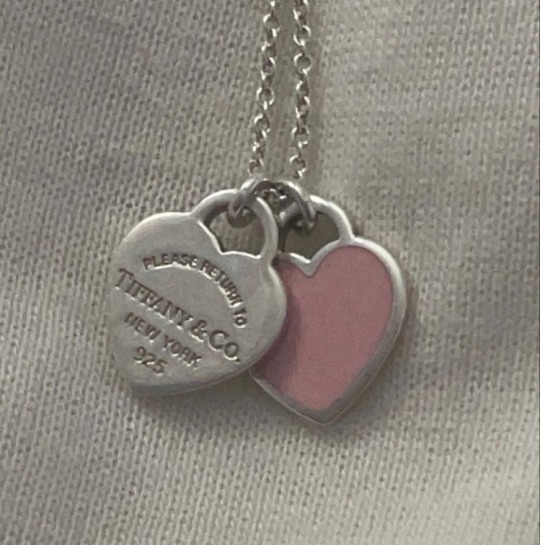
Warnings: mentions of death, swearing, mentions of grief…Summary: A little background on how you got into a relationship with lacrosse player Abby Anderson and how the two of you spent your first Christmas together.
You’d started dating Abby Anderson towards the end of your freshman year, of college. She was a year older than you, but that had never made anything about your relationship unorthodox.
The two of you had actually met at an on campus support group, for students who were grieving the loss of their loved ones. You’d lost an aunt who you’d been very close with, leading you to join the group. Per your guidance councillor’s suggestion. That’s when you met Abby.
You’d heard briefly about the horrifying civilian attack on the Seattle Women and Children’s hospital, just not the full extent of it. All you knew was that an angry man had stormed the building, killing multiple doctors, surgeons and patients. Two months into attending the group and you’d found out that one of the victims was named Jerry Anderson. Abby’s father.
Reluctance was the perfect word to describe your feelings towards befriending Abby. At first glance she wasn’t the kind of person one would think to approach, but once you’d started to share more and her the same, you knew you wanted to get to know her better. Not to mention you’d always had a crush on her ever since you’d seen her photo in the college newsletter.
‘Top right, Star Lacrosse Player; Abby Anderson’ With a photo of her holding up a bronze trophy, her teammates huddled around her in joy. Since then she’d been merely a hallway crush, someone you’d see at games and swoon over or pass by in different campus buildings and drool about.
Tired of waiting, you made the move to talk to the bulky and fierce girl one day after group. You were mixing yourself a cup of coffee to go at the craft table when you spotted her doing the same. After you’d made a quirky comment on her lack of sugar she let out the cutest little chuckle ever. One thing led to another and the day ended with you being walked back to your dorm by the girl you’d been silently crushing on for months.
The relationship started off slow, with your and her education and her athletic career you both had your hands tied. But by the end of the summer your relationship has blossomed into something you’d only thought happened in movies. The two of you spent the first three weeks of summer vacation at her late fathers lake house. Your relationship only growing stronger. But by the second month of summer she’d flown off to Europe with her lacrosse team for professional training. Her absence though saddening was relieving to you, as you always worried about her spending the holidays alone in her home without anyone their to care for her.
Fast forward to four months later and you and Abby were spending your first Christmas together. You’d spent months wracking your brain on what kind of gift you’d be getting your girlfriend. Seeing as she could afford anything she wanted with the large inheritance she’d gotten after her fathers death. You knew she appreciated things from the heart rather than grand gestures so that’s what you did.
You recalled a few months into your relationship with Abby when you had told her your favourite holiday was Christmas. She’d simply frowned and then told you all about how lonely Christmas usually was for her. When her dad was still around he was usually stuck at work, leaving her to spend the holidays on her own. She’d never gotten experienced a big Christmas dinner, the taste of homemade eggnog and had never even had a Christmas stocking.
That’s when you knew exactly what you’d be getting her this year. You’d made a commission on Etsy, sending a design you’d made on your own. Including her lacrosse number, her initials, little symbols that meant a lot to her and the embroidered Star signs of both her and her father. You’d spent the entire week hiding the stocking in different areas of the house, seeing as Abby always seemed to be looking for something.
When Christmas morning had finally come you’d coaxed your handsy and needy girlfriend from bed, before things could escalate further and ushered her towards the little but full of life Christmas tree. She’d insisted you open your first to which you reluctantly agreed.
“Abby, you didn’t!” You yelled, a little louder than necessary.
“It has our initials, do you like it?” She was scared from your reaction that maybe she’d gone a little over the top.
“Like It? I fucking love it. You bought me a Tiffany Abby!” You inspect the necklace further, only to find your initials and hers had been engraved onto the back. Immediately the waterworks were let free and she was rushing over to hug you in fear that she’d somehow upset you.
“Baby, please don’t cry.” She holds you tightly towards her broad chest and you’re trying to stop the tears but you’re just so happy.
“I’m sorry, it’s just so beautiful. Thank you Abby.”
“Ofcourse, anything for you.”
“Alright, mine isn’t as fancy and expensive. I hope you still like it.” You hand her the box that was wrapped in red wrapping paper and littered with little snowman’s.
“Anything from you I’ll like, trust me.” She grins, her hands making quick work of tearing apart the wrapping paper. She finally gets to the gift box and slowly opens the lid. She lifts the stocking and immediately her heart stops.
For a few minutes the house is dead silent, you were sure you could hear a pin drop. Abby hasn’t said a word and you’re fearing that maybe your gift wasn’t good enough in comparison to hers. Before you could ask she’s sobbing and throwing her arms around you.
“Thank you, I love you so much, I love it.” She’s mumbling into your chest, the tears making your sleep shirt damp but you didn’t mind.
“You really love it?”
“My dad and I’s horoscope, our initials, the stocking in general. You know that’s all I’ve ever wanted thank you for being so thoughtful.”
“I’m glad you liked it.” You smile, as she finally removes herself from your chest, wiping away the tears.
“Not liked, I fucking loved it, best Christmas ever.”
“Abby it’s only 9am.”
“Doesn’t matter, still the best Christmas ever.”
The rest of the day was spent in the kitchen, with you instructing Abby on what to do as you attempted to put together the best Christmas dinner you possibly could. The table consisted of a whole leg ham, eggnog (a recipe you’d found online), lots of potatoes and a Yule log that you had to stop Abby from devouring before the ham had baked through. After a filling dinner, shared kisses and screening of home alone in the living area. Abby had taken you into the bedroom to give you your last Christmas present of the night
#abby anderson fluff#abby anderson x reader#abby anderson x you#abby anderson x female reader#reader x abby anderson
247 notes
·
View notes
Note
Hello!! I return with more pin making questions :]
In my first ask you mentioned that you'd be willing to go into detail about your favorite social medias, and as I have basically only used Tumblr that would be super useful!
It would also be wonderful if you'd be willing to talk about your experiences with the different shopfronts that you've used, but I understand if you can't due to partnership stuff.
And the last question for now, Newsletters! How did you go about setting one up/what program you use/how long does it take to write an update/etc.
Thank you so much!! You're awesome!!!
Hi again :)) sure I can answer this, this is going to be a very long post so I'll put my answers under the cut.
Same disclaimer as last time that all this is just what has worked for me or what I've personally observed, that doesn't mean this is all objectively correct or factual. Others will have different mileage or find other things that work even better.
Social Media
The three platforms I prefer the most are Tumblr, Instagram, and Twitter.
General recommendations:
Respond to people's comments, even with something as simple as a "thank you" for a compliment. This will help build engagement and foster a good relationship with your audience.
Take nice product photos: keep your pin in focus with a nice background and good lighting. Often you only get one chance for your product to leave a good impression!
Pick only a few social media profiles to manage. Don't stretch yourself too thin such that you can't engage with your audience on all your social media.
Find your niche! It’s easier to gain followers for a specific type of merch (such as, angels) than for a broad range.

Tumblr
Posts have a long but sporadic lifespan thanks to the queue (sporadic means, they will exhibit random bursts of activity). And you can post large image sets and long text posts with links, for this reason it is my favorite platform.
Getting a following on Tumblr is largely luck-based. Users rebel against posts being pushed into their feed by the recommendation algorithm or boosts. Users find posts via other users and not so much the tags, although the tagging system is leagues better than Instagram's (which no longer shows most recent posts and only shows popular posts).
On Tumblr I get the most traffic from:
Responses to user submissions - for example, drawing people's angel requests.
Tag yourself posts
Silly or cute doodles and comics - especially if people can overlay their fandom darlings onto these posts.
Compilations of Pride-related designs, particularly of popular flags
I have noticed over the years, people do not reblog as much as in the past, so it's harder to get your posts noticed.
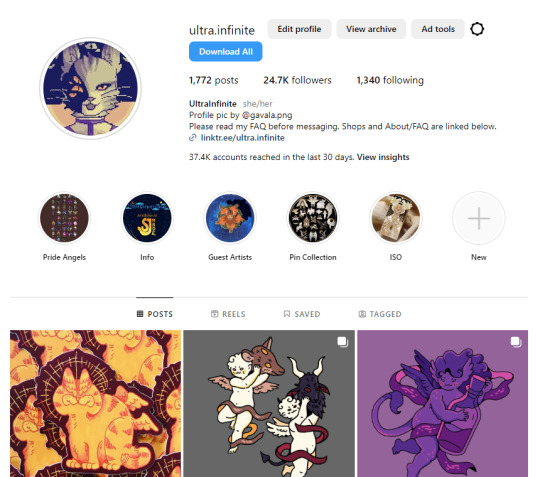
Instagram
In my opinion this is the easiest platform to grow an audience on. Instagram has a very predictable set of criteria for showing your posts to other users, through personal experience it is something like this:
Post once a day.
Post one Reel a day.
No more than three Story shares.
If you deviate from this for too long, or post too many times in a day, Instagram will deprioritize showing your posts to other users. This schedule can be a lot, so if possible I recommend having a buffer of saved up posts and Reels.
Instagram users are pickier about what they like to see. I recommend keeping your profile looking neat and professional; WIPs don't seem to do well there. Instagram users like illustrations and heavily-visual posts; they do not respond well to slides with text on them unless it is a tutorial or tag-yourself post.
Some users like to put memes or other silly images at the end of their posts. I personally don't do this, but I've been told the reason for it is: people share the silly images and that gains more traffic for the post even if they are not sharing the main content.
On Instagram I get the most traffic from:
Fanart of recently popular characters
Tag yourself posts
Pride-related art for popular flags
Cute, colorful illustrated creatures
Anything that asks for audience feedback in the comments. More comments means more engagement, which means it's bumped up in the algorithm.
Hosting monthly art challenges such as Angeltober
Bare chested men
And I have noticed DTIYS challenges are popular and a great way for people to find your profile, although I haven't hosted one of these yet.
Tags on Instagram appear to matter less than in the past, but I still think they are worth using. Try to tag for the content in your post (such as "#biblically accurate angel") instead of using tags for artists or small businesses (such as "#smallbusinessstrong"). Everyone else is using these tags so you have lots of competition, but no one is trawling through those tags so you have less engagement from them. Users are looking for specifically the content they like, they don't care who is posting it.

Twitter
The most arcane out of these three platforms. Getting noticed on Twitter seems to be largely luck-based as well. I had my Twitter profile for a while with little traffic on it until I started posting the new Pride Angels, then it blew up. Hashtags are pretty useless on Twitter and I didn't have many followers before then so I'm not sure why those got popular at that time.
On Twitter I get the most traffic from:
Pride-related art for popular flags
Other relatable art such as for astrological signs

Dishonorable Mention: TikTok
I have a TikTok but I just use it to crosspost my Instagram Reels. I do not have many followers on TikTok, I do not put effort into it, and I dislike the interface. That being said, I have heard from other creators it is way easier than Instagram to grow on if you are willing to make videos and post every day.
A note on blacklisted words
On Twitter, Instagram, and possibly Tumblr too: words like "shop" "link" "commission" etc. may cause your post to be deprioritized. This is because social media platforms do not want you going off of them to some other site to spend money elsewhere. That's why you'll notice people censoring these words ("shop" to "sh0p").
Personally I dislike doing this, it just makes me feel silly, so I don't bother. But I will admit, it hurts my posts. So this is something to keep in mind if you want to do shop promotion on social media.
Shops
The shops I run are, in the order of making them:

Redbubble
The lowest possible barrier to entry for a merch artist: they literally do everything from production to shipping for you, and all you do is provide the artwork. The trade-off is that it's very hard to make any significant money from Redbubble (I make maybe a few cents at most from each sale), and you have no control over the quality of the products.

Etsy
My referral link here.
While Etsy can be imposing at first, it is probably the easiest out of all the marketplaces to start out on. There is a lot of information to fill out to get started, so take it slow so you don't get overwhelmed. It does get easier after the first listing. Once you make one listing you can just keep duplicating and changing it a little so you don't have to keep making listings from scratch.
Etsy claims you need ten listings in your shop before you open it, but you can ignore that.
Once you've gotten started, there's lots of little tricks to learn such as letter mail shipping, all about VAT, improving listings, sections, and so on that I could go into more detail on if anyone is interested. For now I'll just focus on the platform itself.
I like that Etsy has a marketplace search, as a customer it is really nice to use. I like that it has one big cart for all the items I am looking at, and that it has a favorites system. I also like as a customer how each shop is uniform; I know exactly how to search through each shop and what format to expect. I do enjoy artists' custom shops but, sometimes their interfaces are tough to navigate.
Etsy is reasonably good at showing your items to people, which is the number one reason I recommend it for beginners. Just make sure to put effort into your listings such as tagging them, adding nice photos, and videos.
They have protection features built-in such as covering refunds if an item is delivered but the customer claims to not have received it. Etsy also enables international shipping with VAT which is great for EU/UK customers. My biggest gripe with Etsy is the fees, which I've already complained about.

Gumroad
Not much to say about Gumroad really. I only use it to list digital items such as PDFs of my lineart. I think it's saved me a few inquiries from people looking for my art for tattoos. Since all that art is for free on social media anyway, I don't charge for purchases on Gumroad. That's just a personal choice though.

Mercari
Not much to say about Mercari either. I use it to list pins from my personal collection, though I've seen a handful of pin makers use it for the pins they've created. I think the Mercari listing creation is atrocious: they like to recommend titles for your items when you upload new images, and will overwrite existing titles.
I've been considering moving away from Mercari, they recently switched their fee model so now buyers pay fees instead of sellers. This means while sellers can lower their prices, buyers get sticker shock and then ask for discounts on top of already-discounted items. I'm only on there because it's the most popular place for second-hand pin selling.

Shopify
So far I've really enjoyed Shopify. The setup was nightmarishly hard, not to turn anyone off of it but it took me literal months. You can import your listings from Etsy to Shopify but then you have to redo all the SKUs, link up photos to variants, and so on. If you have a ton of listings like me it takes a while. If you only have a few it is more worth it or, might even be worth starting out on if you can do sufficient promotion.
The major advantage of Etsy over Shopify is the marketplace feature: if you don't need the help of Etsy to promote your items then Shopify might be the better option to start out on.
I like that Shopify has significantly lower fees vs. Etsy. However, they do payouts differently and in a way I dislike. Etsy will deduct your shipping fees before calculating your payout balance, while Shopify will payout your balance and then charge you for shipping as part of your monthly bill. So you need to make sure to set aside some of your funds always to cover the Shopify shipping charge.
Additionally, to enable certain integrations or features you will need to pay for them monthly, which can add up. To sync my inventory between Shopify, Etsy, and Faire I use Trunk Inventory, which charges me a monthly $60 fee. That's in addition to the monthly Shopify fee.
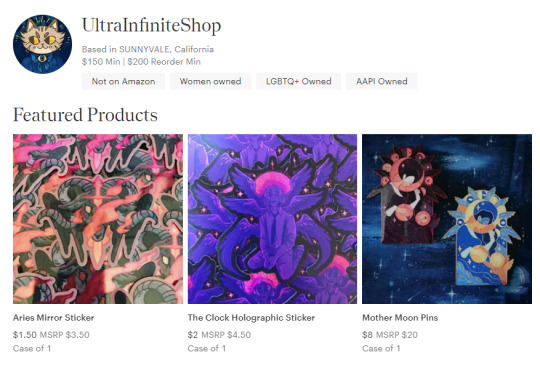
Faire
I actually hate Faire despite using it. I was going to use Tundra but Faire drove them out of business (lawsuit pending). Now Faire is the only game in town for wholesale so I'm forced to use them, not that it's done me much good since I haven't had any sales there.
I can rant for ages about Faire's horrendous fees and outdated product import. But if you're a beginner you don't have to worry about wholesale selling, so I'll leave that discussion for another time. If anyone wants to hear more from me about Faire they can send another ask.
My stockists
It's quite hard to give honest reviews of my stockists here, since they might see them so, I'll just share my Linktree for them and you all can investigate on your own and inquire privately.
Newsletter
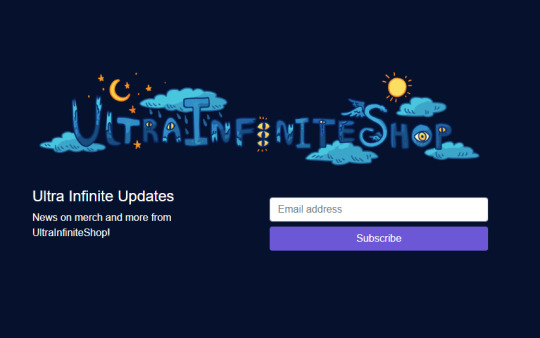
I used to use Tinyletter but it shut down, so now I use Email Octopus. Here's a referral link, and you can check out my newsletter sign up page here.
Email Octopus doesn't have a newsletter archive, and the interface is more complicated than Tinyletter's, which I dislike; but I like it better than Tinyletter's replacement Mailchimp.
You can try these out for yourself and see which you like better, it really is personal preference. All newsletter services are essentially the same: all you need is a sign up page, a way to store emails, and an ability to send a newsletter to them.
To get people to sign up for your newsletter, I personally recommend always offering it as a choice. For example, if you run a pin campaign, send an update where you share a link to your newsletter to your backers so they have the option to sign up. Do not export their emails and add them to your newsletter without a choice. I have been on the receiving end of this as a backer/customer and it makes me feel bad: it's extra emails in my inbox I didn't agree to and it feels like the creator misusing my information even if technically they are not. As a fellow creator I totally get why others might do this, it's an effective way to get lots of new newsletter signups at once. I just don't personally like it.
Shopify has a built-in newsletter feature you can use as well if you make a Shopify storefront. From your dashboard you can go to Marketing > Create campaign.
I like to send out a shortened newsletter via Shopify. Usually what I do is copy my full newsletter from Email Octopus to Shopify, and remove any bits not directly related to my Shopify, such as news on crowdfunding campaigns.
Writing your newsletter
Writing a newsletter doesn't take much time, and I think it should be a low effort task. In fact, if you make it too long people will not read it.
Throughout the month leading up to a shop update I will update my newsletter with whatever new items are ready, taking only a few minutes here and there. I include a few photos and I make sure to link to the items once they are listed (truncated example below).

I will also alert people to any sales or other special offers, news about stockists, and crowdfunding campaigns: anything a potential buyer would be interested in.
I have seen other artists share much longer newsletters with impressive graphics, sections on their art process, personal updates - but for myself I usually skip over that stuff in my inbox, so I don't do it as a creator. For others it might be worth the effort!
Final Thoughts
If you read all this, thank you! I know this was a very long post. I hope it helps at least one of you. I won't keep you much longer: you can find links to everything I mentioned in my Linktree and if you have more questions you can send an ask.
One day I'd like to make a tutorial series for making and selling merch, so this was useful as a draft for that. I would also include manufacturer reviews. If that's something you'd like to see someday you can let me know.
23 notes
·
View notes
Note
Not sure if this has been asked before but, how did you start doing professional work for traffic cabinets? Was there some sort of job fair or exhibit that you advertised your art at and the city decides "this guy is really good, let's get his art in public"?
OKAY so the thing with public art is it's all local and every city kinda does it differently, but so far in my career all of the public art stuff i've done has been application-based
this got long so i'll go into details about what the searching/application process looks like under the cut but tldr: a big part of finding work like this is knowing where to look for local opportunities and submitting applications
generally the cities/towns/whatever will put out a call for artists (also sometimes called a request for qualifications or RFQ) that's basically like "hey we need some artists to do this, this is how much we'll pay you and the details for the project" and from there they'll link a form (or sometimes give you an email address) to apply to where you submit stuff like your contact info, resume/portfolio, sometimes references, and usually a letter of interest on the project
because i submit applications to things pretty regularly, i'm usually good about keeping track of what i use to apply to things—this includes what i've written for applications and stuff like image descriptions—so when I apply to new things it's a lot of copypasting and editing things to explain how i'm a fit for the specific project yadda yadda it's cover letters. it's basically cover letters. pain and agony
in terms of finding the applications, i'm signed up for several local newsletters and arts organizations, but i also check sites like the az commission of the arts (bc i'm az-based) for their updated list of opportunities pretty regularly, as well as searching for stuff like [city] arts and culture and poking around the .gov sites to see if they have an arts opportunities page. in all honesty a pretty big component of finding this work is knowing where to look, and unfortunately if you're doing public art a) it's not always listed on social media b) the best places to look/start are local, and that differs for everyone so i can't say like "oh look here and you'll find something"
once you apply it usually takes awhile to hear back (they usually give you a timeline on the initial application of how long it takes to review all the applications), but i've found people in these fields are good about letting you know when you didn't get something so you can move on with your life lol. atm i'm waiting to hear back from....over five things so i'm kind of always doing this "applying to projects while i'm working on other projects" song and dance which is honestly just...kind of the freelance artist experience?
i feel the need to mention that public art stuff like this consists of about...2/5 of my yearly income...? i'm not solely making a living off of doing these things bc i also usually have teaching and ttrpg illustration stuff in the mix BUT there are artists who can and do make a living off public art and murals and whatnot. i simply cannot resist the urge to stick my finger into any pie i'm even remotely qualified for
working with public art stuff is also that same thing with a lot of fields where once you get some sort of experience, it's easier to get more jobs, BUT as an artist your portfolio can do a lot of speaking for you, even if you don't have experience with public art specifically. take my traffic boxes for example: i've done three of them now and have a fourth lined up, i know that if there's an application for one i have the exact experience they're looking for and will in all likelihood be one of the selected artists at this point. however with my very first one, i obviously didn't have a traffic box in my portfolio so i included a digitally illustrated city banner i designed, several other digital illustrations of mine (bc they wanted a digital artist), and a mural i had painted on a 3d object (to demonstrate i could design with 3d forms in mind), and together these things all helped my credibility as someone who could do this project. as much as i loathe writing letters of interest these are also good places to elaborate on how your portfolio can connect to the project
also with public art starting local is also your best bet at first (not to say you can't land other opportunities right off the bat though), bc people like their artists to know the local scene. i have the experience to back me up more nowadays, but when i was first applying to things you bet your ass i was all like 'i love it here and want to give art back to my local community bc i'm an artist and i'm fresh out of college yaaaaayyyy' you don't have to mean this when you say it, but they don't have to know
thank you for the ask !! and best of luck with any of your potential artistic endeavors (to anyone reading this)!! feel free to ask any more questions, i'm happy to elaborate on anythin btw for anyone :>
#insidiousclouds-2#asks#it's so funny bc my general perception of myself is 'guy who fucks around and draws pictures'#but then i write stuff like this out and i'm yet again forced to confront the fact that i am a semi-competent professional in my field hsdh#also i think i specify this enough but. public art varies so much location to location#i'm starting to branch out into less local opportunities but there is a lot to be said about me being fortunate enough to live in an area#where there are these arts opportunities. the traffic boxes specifically are a popular thing here in recent years so idk abt other places#also sorry if there are typos
13 notes
·
View notes
Note
Hi RK! I think about you a lot as far as seeing the writer I want to be out in the wild. You self-published, right? Do you have a Guide for those of us wanting to follow your path, or advice on Where to Look for going in the self pub direction?
Hello and thank you so much!! I apologize if this gets rambly- there's a lot to cover, and I hope you stick with me through it.
I am indeed self-published! Everyone's situation and goals are different, but for me, I work full-time, write on the side, and want to push out professional-looking books because...well, because I want to. I currently don't plan to move to writing full-time, and I do have a job that helps cover the costs of an editor, cover designer, etc.
That's all important to establish up front, because that majorly impacts basically everything else about my strategy.
Because I work full-time, I can't write as fast as other folks. I also don't have as much time to spend on marketing. But because I work full-time, I can set aside money for a line editor, a cover designer, a proofreader, and an illustrator if needed, as well as cover a website, pre-order goodies, author copies for giveaways, a BookFunnel subscription, etc.
So, with all that...
Step 1:
Assess your goals, your abilities, your limits, and plan your strategy around that.
I realize that sounds really vague, but there are so many aspects to self-publishing, and so many things that can either cost $0 or $1,000, that it's worth jotting down the following first:
What you are comfortable & proficient with doing yourself (cover design? proofreading? making your own pre-order swag?)
What you have time for (things like social media, newsletters, and designing your own cover all take time)
What you have the money for (if you're going to spend money on anything, the conventional wisdom is cover design + editor)
What you have the energy for (book release speed, marketing, etc)
What your end goal is (publishing for fun? for a career? for something in between?)
Once you have all that jotted down, I'd plan out the following (and this is really starting from square one):
Your Books' Content
What genre do I want to write in? And do I want to put effort into targeting a sub-genre or sub-sub-genre (a successful strategy for career-focused indie authors), or would I prefer to keep myself flexible for creative purposes?
How much research do I want to put into this genre? A lot of intense indie authors will read a ton, research genre expectations, analyze tropes and covers, etc. But if you're just having fun, that's totally cool!
How quickly do I want to write? And the corollaries: do I want to write a bunch at once, then rapid-release? Or write and release one at a time?
What do I want my editing process to look like? I'd consider things like beta readers, sensitivity readers, and professional editors and/or proofreaders. (For later: don't forget about front and back matter, like copyright pages, acknowledgments, "leave a review and sign up for my newsletter!" pages, etc.)
Your Author Presence & Marketing
How do I want to appear as an author? Do you want to go all-out with a website, newsletter with reader magnets, Patreon and/or social media presence? Or pick and choose a few/none of those things? These are major time-sucks, and the conventional wisdom is that you don't want to try everything at once (particularly social media sites). Master one thing first, then move on to the next. (This is a, uh, do as I say and not as I do kinda situation...)
How do I want to handle cover design? Maybe the most important part of marketing besides your blurb. Please please don't skimp on it.
How do I price my books? Check other books in your genre and see what their average cost is.
What do I want my release strategy to look like? Pre-order goodies? ARCs? Giveaways?
Do I want to participate in any promos or paid advertising? The answer is typically 'no' at the beginning, but I've found BookFunnel to be helpful when it comes to distributing reader magnets and joining group promos.
The Technical & Business-y Aspects
(Not things you have to worry about right now, but things to eventually research and keep in mind.)
What format will my books be in? E-books are cheaper to produce than paperback and net you higher profits. But if you really wanna hold your book in your hand (like me) and write in a genre where readers buy paperbacks, then it could be worth planning for that as well.
How do I want to distribute my books? There are a ton of ways to distribute your book. Amazon, IngramSpark, Draft2Digital, Gumroad, Itchio, selling directly on a personal website, etc. If you also want your books in libraries and brick-and-mortar stores, that will impact your distribution strategy.
How will I typeset/format my book? You can do it through Word or Scrivener or even Reedsy's site, but there are also paid programs that make it easier and freelancers who can do it for you.
What sort of licenses do I need to sell books? The really not-fun part. Check your federal, state, county, and city for any required selling permits, business licenses, and tax rules. I'd also look into if you want to set up a DBA ("doing business as") or an EIN (basically a business tax ID number so you don't have to use your personal SSN).
What sort of ID numbers do my books need? For example, in the US, you need ISBN codes sold by Bowker. Not required for ebook, but required for paperback, with a separate code needed for hardcover, translations, or subsequent editions.
How do I copyright my books? For the US, it's the US Copyright Office.
(US Only) Do I want an LCCN (Library of Congress control #) for my book? This helps you get into libraries. If you want a #, you need to fill out a form before your book publishes.
Resources!
I realize this is a LOT to research. Please don't feel like you need to do all the research at once or know everything right away. Put most of your focus into writing and set aside some time to tackle the other topics as you go.
Here are some resources I found to be helpful:
FB Group: Wide for the Win (all about distributing across multiple platforms)
FB Group: 20Booksto50K (very business-focused, almost to a fault, and has some failings, but also has some great advice and detailed insights. I'd recommend using this page only if you're very serious about self-pub)
FB Group: Author Unleashed (great for getting blurb feedback!)
David Gaughran's "Starting from Zero" free online video course, all about marketing when you're totally new to the game
Tammi Lebrecque's Newsletter Ninja books and resources, if you want to delve into newsletters and reader magnets
The Complete Guide to Self-Editing for Fiction Writers by Bucket Siler
The Indie Author's Bible by Christopher D Schmitz
Becca Syme's series for indie authors
A word of warning...
There are a lot of people out there making money off writing resources, aka selling mining equipment to the miners rather than mining themselves. There are thousands of self-publishing gurus with books, consultation packages, sales funnel advice, etc. Before you throw a lot of money at those resources, do some research and take a look at what other indie authors recommend first. (If it helps, I really do trust David Gaughran, Tammi Lebrecque, and Becca Syme for starters.)
Okay that's it!
That was a lot. I'm so sorry. I'm happy to answer any specific questions or concerns you have!
96 notes
·
View notes
Text
A Year in Retrospect
The social media diaspora began a year ago, and I've been neglecting Tumblr. Trying to come back, slowly, so here's what I've been up to since November 2022.
Bio-Drones & Cryo-Clones
From November to February 1st, 2022, I worked on my Zine Month campaign, a Kickstarter for my first ttrpg zine, a Sleeper Crew Adventure for Mothership RPG called Bio-Drones & Cryo-Clones.

I was blown away by the immense show of support. The crowd-funding allowed me to pay for even more art, better and bigger maps, development and editing, and professional layout. I got to make the zine into the amazing package I'd dreamed up.
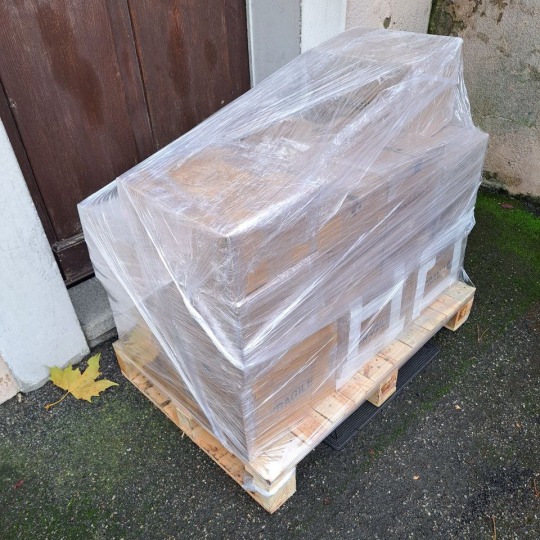
The zines were sent off to the fulfillment center last Friday! A ton of my ttrpg work time was spent on what's in these boxes, and it's pretty scary to see it go off into a truck. That does mean the zines will be available at retailers soon, though, which just feels nuts to me.
The Unseen City
I also wrote The Unseen City, the first 3pp setting and adventure for Cloud Empress, the ecological science fantasy RPG, the successful Mothership hack from Worlds by Watt.
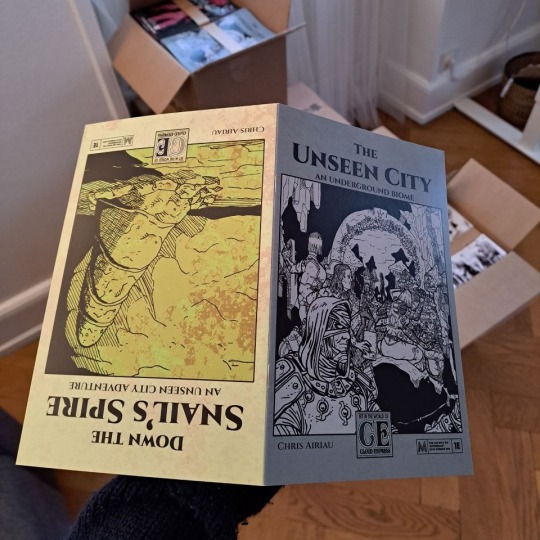
I go into depth about how this 20pg zine turned evolved from the "Pamphlet Duet" I originally conceived in my most recent newsletter. A lot of struggles, gained some killer art from HodagRPG, and all for a game I'm really quite happy with. I do plan to return to writing more adventures for The Unseen City as well!
Mitosis, Escape from STAR Station
Last year, RV Games published my Mothership pamphlet series The Cerdo Cycle (that was my last Tumblr post!). Shortly after the campaign, Violet asked me to write a giant 8x16 inch pamphlet adventure for RV Games' upcoming in-universe Mothership board game, Mitosis.

I wrote Escape from STAR Station, a gonzo adventure about a Prison Break amidst two warring factions: Cyberviral Pirate Goons & STARS Staff Brainiacs. Both sides are infected by experiments with the Mitosis board game microorganisms. It's a crazy lil adventure with awesome art by Sigmacastell. You can pick up an abridged print-at-home version for free on my itch page, even.
5 Million Worlds RPG
For the One-Page Game Jam this past summer, I submitted a pocketzine Space Adventure hack of Mothership, called 5MW RPG: Avatar Basics.
In this little A4/US Letter space, I've designed two main pulls away from sci-fi horror to space adventure. The first are Push Tables. Similar to the end of act in a Star Trek episode, these tables push the conflict in new and unexpected directions.
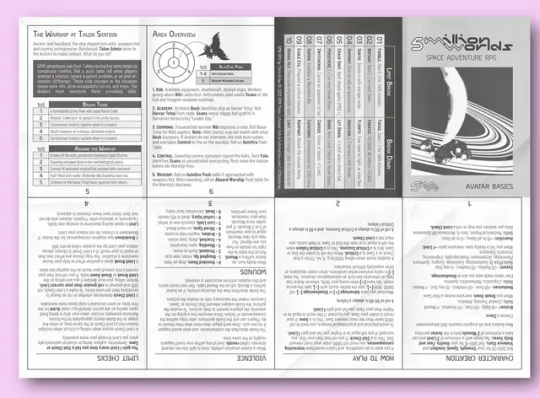
The second is a switch from Stress into Limit. Limit is your PC's XP, used to improve Stats/Saves, build towards projects, etc. Notably, instead of a Panic Table, 5MW has two tables: a Break Down table (similar to Panic), and a Limit Break table (like in FF).
When characters are in the shit, and they have to roll a Limit Check, the players can decide whether to spend their XP and do some cool shit to overcome the circumstances, or accept the Break Down. Good ol' @christiansorrell even did a TikTok video discussing the game, if you wanna check that out.
I'm very excited to continue to pursue creating a player's handbook, 5MW RPG: Avatar Primer. If you download the game on itch, I'll keep y'all apprised of substantial updates. Next up is developing the chargen, and reconfiguring the pocketzine as an A6 booklet: 5MW RPG: Avatar Basics+.
Outer Rim Uprising
I was extremely honored to join 11 other designers to create pieces of the Outer Rim Uprising Megabundle, spearheaded by our intrepid leader, Iko of The Lost Bay Studio.

Several months of brainstorming and collaboration went into this 20+ piece bundle. I contributed two pieces for this bundle. The first is a 12pg adventure module Rusted to the Core. Androids aboard an aerostat station floating in a gas giant's clouds have gone on strike. Can the PCs resolve the issues before the Rust overtakes the station?
The second is the more "experimental" Bones on the Ground. Bones is a bifold adventure into an android museum-prison, paired with three diegetic fliers supporting the ARA, the Android Rights Association (or Android Rebel Alliance, depending on who you ask!). Pieces of the three flyers contain clues for PCs who join the ARA to better succeed when they begin their museum infiltration.
A Buncha Spaceship Deckplans
So I have ADHD, and experience bouts of summer mania. Spaceshiptember rolled around, and I thought, "Hey it'd be no problemo to write 30 deckplans and release them this month, while I'm also trying to print BioCryo, promote ORU, starting a newsletter, and finishing up The Unseen City." Totally sane decision, right?
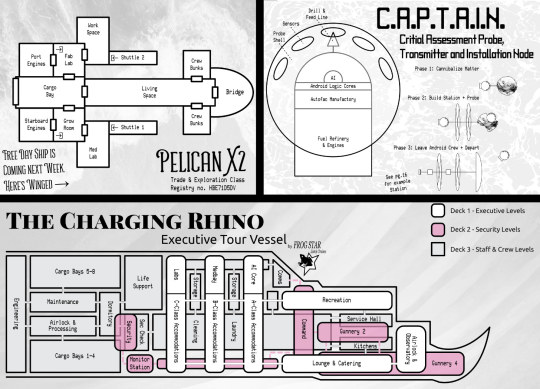
Well, I got through half the month. And I sketched out a third week's worth of ships on paper too. One of those sketches caught Adam STATION's eye, even, and he asked me to join An Infinity of Ships to turn it into a micro-adventure!
As long as this quick-n-dirty zine remains unfinished, it'll be free on itch.io. Again, if you'd like, follow along and I'll send out dev updates when new pages are added!
the dying tides
Another Jam entry, this time for The Lost Bay Studio's system agnostic fantasy setting + coloring book, SKYREALMS.
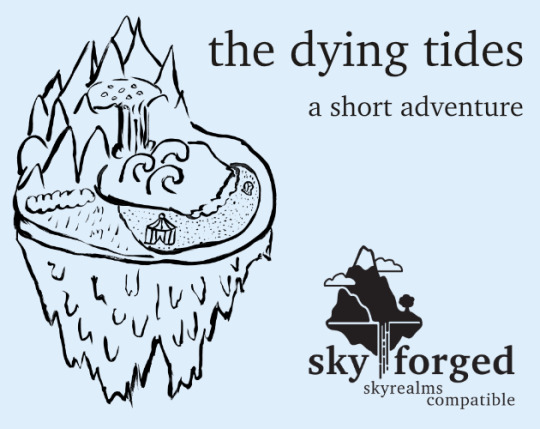
I made the dying tides as a short, lightweight fantasy adventure to venture among wavebros and squidillies. The art is based on my 4 yo daughter's paintings. Since she loved coloring the SKYREALMS books so much, I figured it was a poetic homage to the kind and mysterious heart of this game.
An Interactive Terminal Network
Last but not least, I smashed my skull against Twine on and off for six months to create a unified Interactive Terminal Network for my Mothership adventure, Bio-Drones & Cryo Clones.
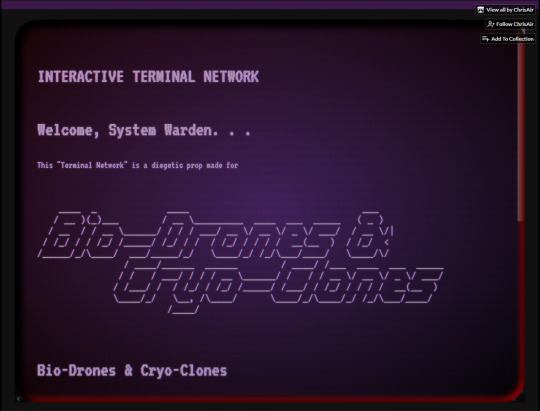
The terminal is absolutely free to play on itch.io. Though passwords that can be found in the zine lock off a few areas. That said, I'm sure many folk could dig out the passwords without the zine. I don't know how to do that stuff. The fact that I even MADE this thing is a miracle to me, hahaha.
Goal for 2023
Talk about this stuff as it's happening so I don't infodump on people like this, haha.
What I'm working on now:
Twisting Unseen
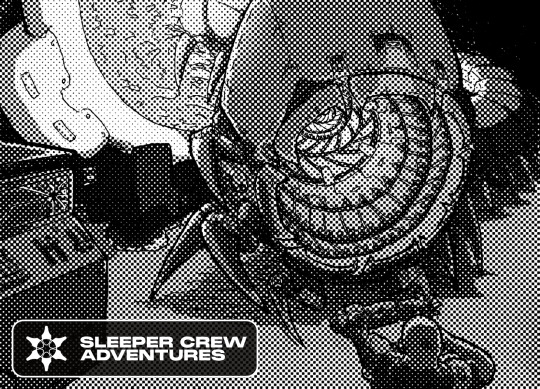
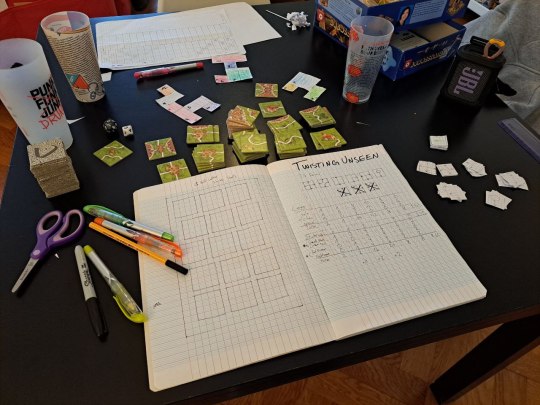
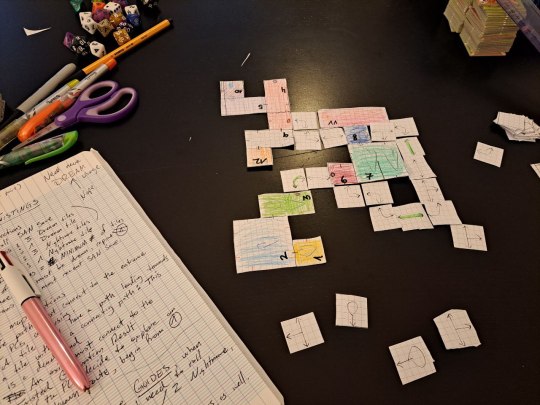
Untitled Liminal Horror adventure
Provisional sketches, for the artist/layout designer.
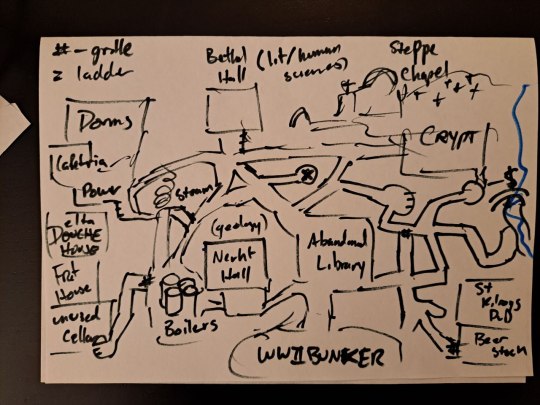
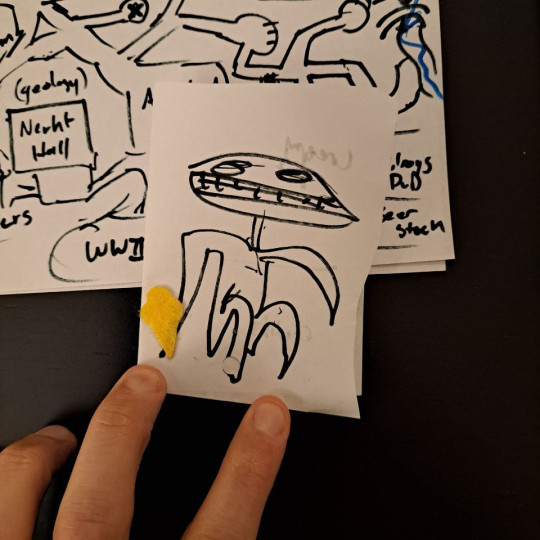
Also, if you made it this far, thanks.
-Chris Air
#indie ttrpg#mothership#mothership rpg#ttrpg#horror#spaceship#role playing games#tabletop#fantasy#liminal horror#science fantasy#nausicaa#nausicaä of the valley of the wind#rpg
29 notes
·
View notes
Text
Foundry Fabrications Has a New Home!
Hey folks! I am incredibly excited to announce the launch of something I’ve been working on the last couple of weeks: Foundry Fabrications now has a dedicated website!
For a long time, I’ve wanted a place away from Tumblr that I can call my own, where I can make all of my content easily accessible for everyone, and that can grow and change alongside me. A long time ago, I tried something like that, but it didn’t go well for a multitude of reason. Mistakes were made during that transition that I don’t intend to make again.
The new site will now be my main base of operations going forward, but I’m not going to outright abandon Tumblr like I did before, and Patreon isn’t going anywhere either. As some of you maybe saw, I have the new site set up to automatically send new posts here when I post them, so you’ll all still be kept in the loop should you decide to just stay here and not engage with it, which is totally understandable. And I still plan to check in every once in a while and make posts that are relevant to the platform should I need or want to, as well as respond to comments or questions when they happen.
Speaking of being kept in the loop, something the new site allows me to do is newsletters. Anyone who subscribes to it (which is free) will be notified by email when something new goes live. Eventually down the line I’d like to add more too it like TTRPG news or other content I want to shout out, stuff like that.
The site itself right now is nothing fancy, though I put a lot of work into making it as professional and user-friendly as I can. I’ve no experience in web design and a lot of it was existing templates I tweaked to suit my needs, as I do, so whether I accomplished that is up to y’all. The main goal was to make it easy to find a piece of content one might be looking for, or easily browse everything to see what I’ve made thus far, and that was easy do to with automatic categorization and a search function. It’s basic, but it works.
Because God has cursed me for my hubris and my work is never finished, I have a lot of plans for ways to upgrade the site with new features, various integrations, and ways to monetize my work. Gotta keep the lights and pay for the domain and service somehow. Initially, that means ads, but I’ll be looking into ways to remove them for regular supporters and I bet most of you use adblockers anyway, which I totally get, no judgement here.
That’s about all I have to say. I hope you all like the new site and I would love any feedback you have on it. Anyway, stay safe, don’t forget to love each other, and I’ll see you soon.
11 notes
·
View notes
Text
[“In 1972, the first Madness Network News went out to eight hundred readers, its design “to bring together and disseminate information about the psychiatric system and alternatives to it.” The newsletter would be chock full of educating and advocacy tools. Its goal was “to put an end to the degrading and alienating practices of the psychiatric system and to create instead a process that validates human beings and their right to express themselves.”
Former patients in the psychiatric empire had finally begun to speak back, and their numbers and voices would grow stronger over the coming decades as some of them emerged as influential professionals in the mental health field. One of the foremost of these was Pat Deegan. Deegan was eighteen years old in her third hospitalization. Her doctor finally explained to her that she had “a disease called chronic schizophrenia,” then elaborated: “If you take medications for the rest of your life and avoid stress, then maybe you can cope.” Her reaction was profound: In essence, the psychiatrist was telling me that my life, by virtue of being labeled with schizophrenia, was already a closed book…. [He merely] recognized me as the schizophrenic who had been handed down through the generations by Kraepelin and Bleuler. He did not see me. He saw an illness. Here was the old nemesis of therapeutic nihilism dressed up for a new century.
Her doctor’s dismissal of her life’s possibilities stirred the eighteen-year-old Deegan to an outrage that sparked a new hope: “I decided that I wanted to get a powerful degree and have enough credentials to run a healing place myself,” she resolved. It was the “survivor’s mission” that turned her life around and that she would clarify for others as being key to their actual recovery. Deegan elaborated that the goal of such recovery “is not to become normal” or to “get mainstreamed,” but to “embrace our human vocation of becoming more deeply, more fully human.” She summarized its practices: “Choice, options, information, role models, being heard, developing and exercising a voice, opportunities for bettering one’s life—these are the features of a human interactive environment that supports the transition from not caring to caring.” Deegan and others were making a case for “revolutionary” and peer-run alternatives to the medical model.”]
mab segrest, from administrations of lunacy: a story of racism and psychiatry at the milledgeville asylum
#mab segrest#pat deegan#madness network news#history stuff#mad pride#wasteland radio#currently reading
237 notes
·
View notes
Text
Carrd Templates Free & Premium Website Downloads - Tempeld.com
Craft stunning, customizable business websites, portfolios, landing pages, newsletters, and more with these professionally designed Carrd template downloads.
Go To: Tempeld.com to download Carrd Templates →
Hi, I’m Craig Leontowicz – a designer and developer. I like building clean, simple, high-converting one-page website templates and themes for Carrd website builder.
1. Resume Template (Free)
Minimalist, professional, dark mode resume or CV template for Carrd website.

View Template Demo · Download Template
Designed for professionals who appreciate minimalist aesthetics, this Carrd template offers a clean and elegant way to present your resume or CV online.
Stand out from the crowd and make your first impression a memorable one with this effortlessly stylish and customizable template.
Pay-What-You-Want Resume Carrd Template in sleek Dark Mode.
Dark Mode Design
Minimalist Layout
Fully Customizable
Mobile-Friendly
Pay What You Want
Download Template / View Demo
2. Digitial Marketing Agency Website Template

Carrd landing page template for a digital marketing agency.
View Template Demo · Download Template $18
Impress your clients from the moment they land on your website. Our template features a sleek and professional design that exudes credibility and trust, setting the perfect tone for your agency’s services.
Highlight your services, showcase client testimonials, and share your success stories with ease.
Our template includes engaging content sections that help you effectively communicate your agency’s expertise and track record.
Sleek and Professional Design
Responsive and Mobile-Friendly
Engaging Content Sections
Easy Customization
Contact Forms and Social Integration
Buy Template / View Demo
3. Website Template for IT Company Carrd Template
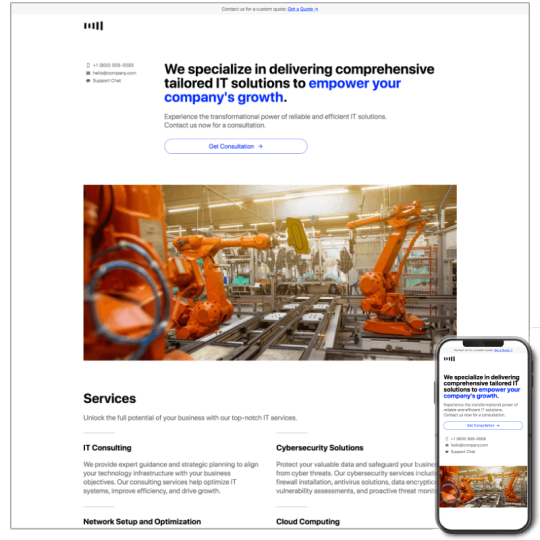
Carrd business website template designed for an IT company or a service-based business.
View Template Demo · Download Template $18
Unlock the full potential of your IT company or service-based business with our Carrd Business Website Template!
Crafted with precision, this template combines cutting-edge design with user-friendly functionality to create a captivating online presence that’s sure to impress.
Showcase your services, and engage clients effortlessly with this professional Carrd template.
Minimalist Modern Design
Pricing Section
Responsive
Services List
Client Testimonials
Buy Template / View Demo
4. Industry Co. Carrd Theme for Business Website

Dark aesthetic Carrd website template for business. This theme has 14 custom-designed sections.
View Template Demo · Download Template $18
Dive into the allure of sophistication with our Carrd Dark Aesthetic Business Website Template.
Sleek and stylish design that’s sure to leave a lasting impression.
This theme boasts 14 custom-designed sections, providing you with the tools to effortlessly showcase your business in a dark, elegant aesthetic.
Stylish
User-Friendly
Customizable
Engaging
Dark Mode
Buy Template / View Demo
5. Newsletter Landing Page
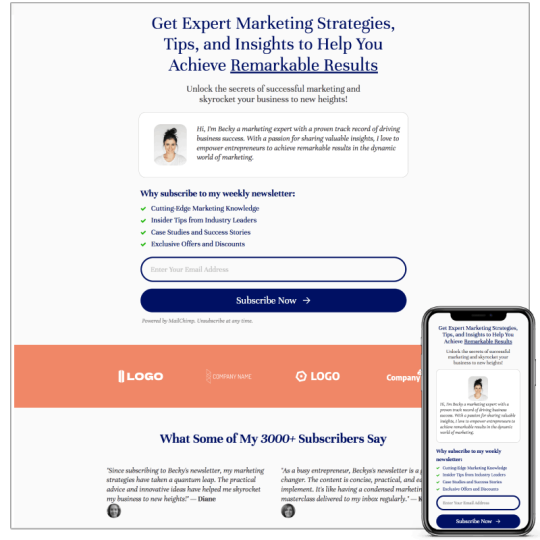
Carrd template for a newsletter, landing page website design. Sections: logos, testimonials, lead magnet.
View Template Demo · Download Template $12
A newsletter and landing page with our Carrd Newsletter and Landing Page Template.
This professionally designed Carrd template has customizable sections including logos, testimonials, and lead magnet elements, allowing you to effortlessly create an engaging and conversion-focused online presence.
With its user-friendly customization options, this template empowers you to captivate your audience and drive results.
Engaging Design
Customizable
Lead Generation
Testimonials Showcase
Easy Integration
Buy Template / View Demo
6. Landing Page for App
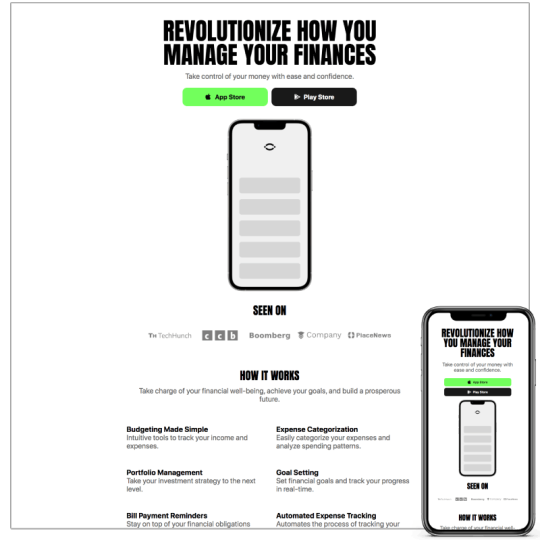
Carrd template for app landing page for a financial app. Sections: Features & Benefits, logos, testimonials.
View Template Demo · Download Template $12
Introducing our Carrd App Landing Page Template tailored for financial apps – the perfect solution to showcase your app’s Features & Benefits, logos, and customer testimonials.
Crafted with precision and designed for impact, this template effortlessly combines functionality and aesthetics, making it an ideal choice to captivate potential users.
Establish your app’s online presence with ease and convert visitors into loyal customers.
Sleek Design
Customizable
User-Friendly
Trustworthy Testimonial and Logos
Features Showcase
Buy Template / View Demo
7. Landing Page for Email Newsletter

Simple, free, Carrd.co template for an email newsletter landing page.
View Template Demo · Download Template
Simplify your email marketing strategy with our free Carrd Email Newsletter Landing Page Template.
This minimalist and user-friendly template offers a seamless platform to engage your audience and gather subscribers effortlessly.
With its clean design and easy customization, you’ll have your newsletter landing page up and running in no time.
Minimalist
Free
User-Friendly
Customizable
Subscription-Ready
Pay What You Want
Download Template / View Demo
8. Carrd Template for Restaurant
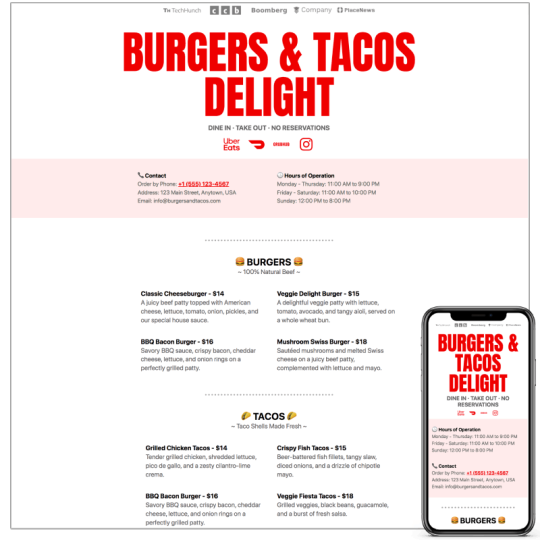
Full menu design. Easy to find contact information. Big bold typography.
View Template Demo · Download Template
Create your restaurant’s online presence with our Carrd Template for Restaurants.
This template offers a full menu design, ensuring your culinary offerings take center stage.
With big, bold typography and easy-to-find contact information, it’s the perfect choice to entice diners and streamline reservations.
Stylish Design
User-Friendly
Menu Showcase
Contact Information
Typography Excellence
Pay What You Want
Download Template / View Demo
9. Sell Digital Download Template

Carrd theme to build a website to sell a digital download product, lead magnet, or newsletter.
View Template Demo · Download Template
Step into the world of retro-inspired digital marketing with our Carrd Theme – a nod to the captivating aesthetics of 1990’s infomercials.
This unique template is perfect for selling digital download products, promoting lead magnets, or building newsletter sign-up pages.
With its eye-catching design and user-friendly features, you’ll engage visitors and convert them into loyal customers.
Retro Vibes
Versatile
Conversion-Focused
Lead Generation
Easy Customization
Pay What You Want
Download Template / View Demo
10. Student Investment Club Template
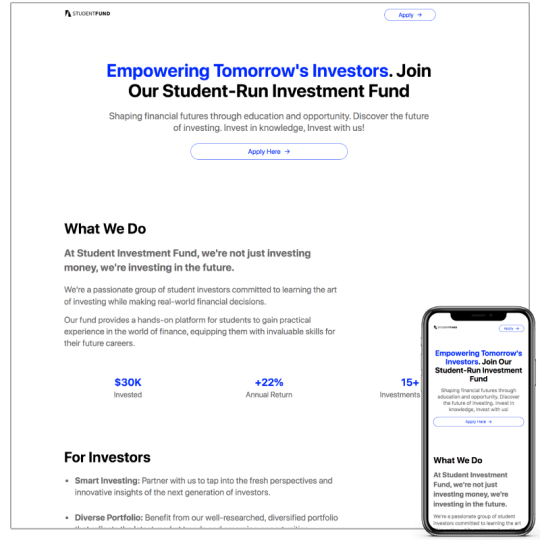
Carrd template for a student investment club.
View Template Demo · Download Template
Start your student investment club’s online presence with our Minimalist Typography-Focused Carrd Template.
This sleek design places the focus on your club’s mission and financial prowess, allowing you to impress potential members and investors alike.
With easy customization and a professional aesthetic, this template is your ticket to a compelling digital presence.
Minimalist Design
Typography-Centric
Professional
Customizable
Student-Friendly
Pay What You Want
Download Template View Demo
11. Advertorial Landing Page Carrd Template
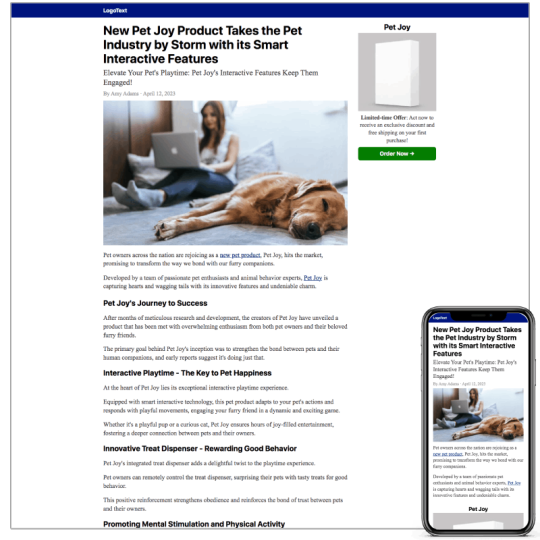
Carrd template for news style blog advertorial template for an affiliate or eCommerce store.
View Template Demo · Download Template
Experience game-changing conversion rates with our Advertorial Landing Page Carrd Template.
Designed to maximize lead generation and sales, this template combines aesthetics with strategic placement of conversion elements.
Improve your advertising campaigns and turn visitors into loyal customers with ease.
Conversion-Optimized
Engaging
User-Friendly
Strategic Design
High-Converting
Download Template / View Demo
12. Simple Portfolio Carrd Template (Free)

Minimalist Carrd portfolio template for photography, artists, graphic designer, web designer, UX, and UI design folio.
View Template Demo · Download Template Free
Launch your online portfolio with our free Simple Portfolio Carrd Template.
Designed with minimalism in mind, this template is a perfect showcase for photographers, artists, graphic designers, web designers, and UI/UX professionals.
With its clean aesthetic and user-friendly interface, you can effortlessly display your work and leave a lasting impression.
Minimalist Design
User-Friendly
Customizable
Portfolio Showcase
Free Download
Download Template / View Demo
Frequently Asked Carrd Questions
What is Carrd.co?
Carrd is a simple, free, fully responsive one-page websites for pretty much anything.
Is there a free version of Carrd?
There is a free and paid plans available on Carrd. Functionality is limited on the free plan. You will need a Carrd ‘Pro Lite’ plan or higher to use these templates from Tempeld.
What do people use Carrd.co for?
People use Carrd to build one-page websites for their business, newsletter/email list, portfolio, or any number of 1-page site designs. The only limitation is your mind.
How many sites can you make on Carrd for free?
You can have 3 websites with basic functionality on Carrd. Plans start at just $9 a year.
Can you sell on a Carrd website?
Yes. Easily link to Gumroad or Lemon Squeezy to sell your products.
Can I use a custom domain on Carrd?
Yes, you can use a custom domain on the register of your choice and point it to your Carrd website.
Can I hire you to customize the design of my Carrd website?
No. Sorry, I am currently not available for hire or freelance work.
Related
Carrd Tutorial – How To Make a Carrd Website
WordPress vs Carrd – Compare Website Builders
Why Use Carrd? 12 Reasons I Like Building Carrd Websites
23 notes
·
View notes
Text

Professional Newsletter Design & Creative Magazine Design
Creative magazine design and expert newsletter design aim to grab readers' interest, effectively communicate information, and improve brand perception. The intended message, the newsletter's goal, and the target readership must all be carefully taken into account. To produce aesthetically appealing layouts that contain branding aspects and keep consistency across the email, designers frequently use software tools. If you are in search of Creative magazine cover design, visit us today!
1 note
·
View note
Text
A general shop idea I'm happy if you institute as well
One of the things I have been tinkering with, and I'm finally settling on, is a monthly zine that pulls the essays and comics and photos etc. I take in a month.
It will essentially be a monthly compilation of the original content I make for social media.
Zines will go out the first week of the month, capturing all the stuff from the previous month, so there isn't a pressure to make stuff specifically for this zine.

"Why not create new stuff?"
Because resources (time/energy/etc.) will be to create new stuff at large -- products, comics, etc.
This is specifically designed to repurpose existing stuff.
The specific point is to connect without adding more work that would derail the creation of stuff.
It's a catch-up. An archive.
An "I get too many emails, not enough physical mail, I want weird ghost mail"
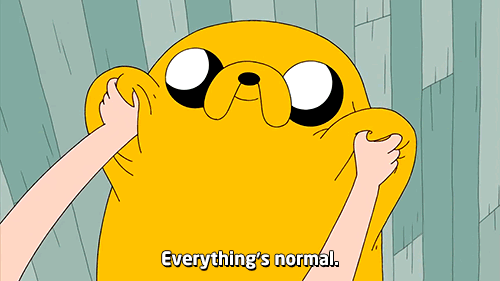
"...so... why would I subscribe to this..."
I, myself, regularly say "Hey I like this comic or thing. Here is a few coins."
It's a take on the $1-3 tip jars, pledges, patreon levels, etc. that are extremely popular to offer, and extremely popular to support.
It's there if you wish to support the content.
It's also there as a way to bypass the multitude of social media platform decays, frustrations, lockouts, etc.
As a person who Makes Things Online and has for 20+ years, I am extremely worried about what the space will look like going forward in the next 20+ years.
Hence!
This!!
Hey remember when RSS was far more accessible? Those were fun times.
Hey remember when Reddit wasn't on the verge of...
Hey remember when Twitter wasn't...
(sotto voce) Do you see where I'm going with this?

"How much is it going to cost?"
About 125% the cost of production, so probably $2-3/month. This is not a profit-making vehicle, the extra grease on the wheel is to cover production issues, lost in the mail, etc.
When I have a sale or launching a new thing, a note will be included. "Hey! For the coming month, use code XYZ! We're launching New Thing on This Date too!"
"Couldn't I just follow you on social media and/or subscribe to email and see it for free?"
Yes.
I'm not trying to shift your behavior from one to another.
I want to create a thing should you say "I like you but I'm tired of XYZ social network and/or I get too many emails."
I want to create a thing should you say "I'd rather read about calling myself an Addams cousin while drinking coffee in the park."
This is not anti-social media.
This is not "people are on their phones too much."
This is not anti- anything, really.
I want to create something should you say "I want more mail. I want more physical mail and I want it to come in a bright envelope decorated weirdly."

It is my professional estimation that online communities are going to continue to fracture. The following is my personal rambling opinion:
It is going to get harder, and harder, and harder, as a person, to keep track of the artists and makers that you are interested in.
It's going to get even harder, and harder, and harder, as a maker, to connect to people who are interested in the stuff you make.
Before social media, you had "marketing," and for awhile, we've had "social media marketing," which is similar but about 100,000 times cheaper.
We are rapidly reaching a point where the majority, possibly the vast majority, of content you see on socials fall into one of two categories:
Created by a large business
Created by a large business but funneled through a special division they created specifically to quietly hide the scale of their operation
This happens right now more often than is comfortable!
And I think it's going to continue to shift that way!
"I'm on board, where do I sign up?"
Until the shop launches, I'm sending out a monthly newsletter. Signup is at netherworldpost.com. This will be among the first projects I launch.
Once said shop launches, I'll continue with the online newsletter, but this will also be available.
I will have an open, public, forever free, never paywalled guide on "This is how I run this with the tiny print shop we built. Here are some ideas if you do not have a tiny print shop."
Thanks!
And feel free to take this idea and make it your own for your whatever sized shop on whatever platform you make things on now and/or the future!
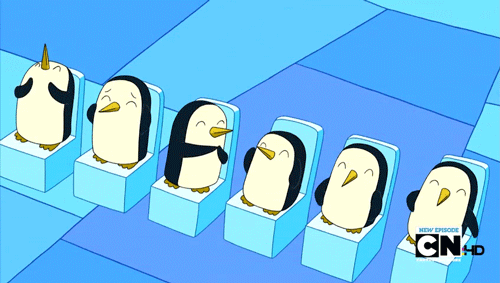
49 notes
·
View notes
Text
Interview on AI / Tech / Poetry / Labor

My writer friend Christopher Soto is interviewing me for a piece on poetry, AI, creative writing, and labor. Most of this is going to be cut, so why not post the first draft here?
*
CS: Recently we went on a hike and were talking about the intersection of literary production and artificial intelligence. You described us as part of “the last generation to experience raw human emotion,” can you elaborate on this idea?
JW: Let me clarify that remark. We’ve been cyborgs and pharmacological hybrids for a long time. I don’t think there’s something like an ideal state of authentic humanness, nor do I think that humanness is better than non-humanness. What I’m referring to is the saturation of distractions, which for me reached a crisis point during the pandemic, when my existence was almost entirely mediated by the internet. Just before the pandemic I had ditched my smartphone for almost a year, but got back on it during quarantine since I was always connected anyway. I became palpably aware of how the very rhythm of my being is regulated by technology designed—using behavioral science research—to be addictive by high-jacking the dopamine reward system. I think people dramatically overstate their “will” and “agency” in relation to technology.
Being hyper-connected made me feel my emotional life was becoming increasingly shallow, that I was just being numbly-entertained-toward-death, and pharmacologically adjusted to serenely endure this horrific existential condition while the world literally burns. As a poet, I find it very disturbing. For me, being a poet is not necessarily about the production of poetry, but about the training of a certain kind of consciousness: the dilation of perception and emotional states, the sensitization of one’s antennae, the tuning of one’s soul for a greater awareness of the mystery of existence, its splendors and absurdities.
CS: We have talked about literary production becoming a collaboration with artificial intelligence, so that the writers of tomorrow will essentially be prompt makers and editors, which input prompts into AI and then edit creative works based on the responses provided. What do you think this would mean for the future of literary culture and cultural production?
JW: I think we could soon reach a point where certain types of writing (screenwriting, journalism, newsletters, web content production) and certain para-literary activities (editing, proofreading, researching) could be fully or partially automated. Some say that the new job that will be created as a result of generative AI and Large Language Models (LLMs) like ChatGPT will be “prompt writer.” There may come a day when plot-driven commercial fiction is written by AI with the help of prompt writers.
A lot of writers economically support their literary practice through various forms of commercial writing and editing—some of those jobs might disappear. In recent decades, it’s already gotten so difficult to survive economically as a writer. At the same time, it’s gotten hard to survive in general, given how obscenely high rent is these days. You can’t just scrape by on almost nothing and hope it works out at the end of the month by frantically combing your couch cushions and the pockets of dirty jeans for loose change and cash. You need good credit to even rent a place! On a societal level, art suffers when subsistence costs are high—it becomes more commercially driven, and artists become more “professionalized.”
CS: Do you think that AI will just stay as a mechanism that will help facilitate human writing of poetry but never become “the artist”? I anticipate there will be a shrinking in the distinctions between “the artist” and “the editor.”
JW: I’ve already heard of writers and students using AI to help edit and develop their work, or generate ideas. But I don’t really trust the aesthetic judgment of ChatGPT, ha!
CS: I’m excited to see the mechanics of literary production transform. You are a bit more hesitant, why so? Are there any AI attempts at literature, which you’ve seen already, that feel particularly noteworthy?
JW: Maybe on some deep level I’m a basic bitch who has a sentimental attachment to the way “writing” has been done for nearly 5,500 years. From cuneiform clay tablets to computer keyboards, the writing process has actually changed very little for thousands of years. It was probably ripe for disruption. But I’m ultimately disturbed by the collective effect it will have on language use—the move toward a statistical norm and the treatment of language as purely informational. I had already started to fret about this when Gmail started autocompleting my emails. (ChatGPT is basically a sophisticated auto-complete that convincingly mimics understanding. This is why it “hallucinates” made-up citations and rattles off fake facts.)
Will the weird, jagged, irregular effusions of language gradually be purged as we drift toward the statistical average? I don’t know, maybe I think of it as something akin to language eugenics. Perhaps I’m hopelessly modernist in my view that language is not about transmitting information or even advancing a plot, but the wayward movement of a thought: the sentence as a technology of consciousness, with its serpentine twists and turns, perverse digressions, and rhythmic pulsations.
I’ve seen AI being used in the conceptual writing and art world for a while now. Some of it is cool and novel in a “party trick” kind of way (like the Twitter poetry bots I followed when I used to use Twitter), but I’ve yet to encounter AI work that I’ve been enamored with. I don’t doubt that AI will (very) soon be able to produce really impressive work, and that’s partly because it’s parasitic on past human creativity insofar as it’s trained on vast reams of linguistic data generated by humans.
CS: Can emotion or spontaneity ever be captured by an algorithm? Is there any way in which AI is like the subconscious (making connections between unrelated concepts, juxtaposing words in a way that pleases the ear and mind, using knowledge in unforeseen ways)?
JW: The AI can convincingly mimic emotion. Tell ChatGPT about your problems and you will feel like it really cares, like it’s really listening to you, just like you might feel when you are personally addressed—are interpolated—by the language of advertising written in a voice of concern or understanding.
For nearly a century, artists have used aleatory methods to make connections and generate juxtapositions that get us beyond the limits of human consciousness, whether it’s the surrealist exquisite corpse practice, William S. Burroughs’s cut-up method, or John Cage’s use of the I Ching and other chance methods in his music compositions. AI could certainly be deployed to such ends. Yet LLMs like ChatGPT are designed to be “predictable” in the same way that autocomplete uses probabilities to predict the next word. I think unlocking a weirder side of AI might involve finding ways to break or fuck with it so it doesn’t just generate the mediocrity of the average.
CS: Do you think collaborations between literary artists with artificial intelligence will create a new economy of poetry in the English speaking United States or will it fall into and transform one of the currently existing poetry economies (academia, spoken word, insta poetry)?
JW: How many poets do you know who can support themselves on their poetry alone? I think I know zero. (Maybe Lisa Robertson could count?) Mostly, I know poets who teach in the academy, poets who do astrology, poets who work as editors at publishing houses, poets who have office day jobs, etc. I don’t think AI will change that. Maybe generative AI will create a glut of language that will make poets even more superfluous, ha!
CS: At large, poetry isn’t very lucrative but this doesn’t mean that it doesn’t impact people’s livelihoods still. Why do you think it is important to think specifically about the intersection of poetry and AI?
JW: The thing I love about poetry is its uselessness, the way it is, with a few exceptions, superfluous to capital, difficult to commodify, gratuitous in its insistence on avowing that which has been marked valueless by our hyper-commercial culture. When I think of Sapphic lyrics or Homeric epics, I am reminded that poets once occupied a quite prominent social position, as keepers of history or ceremonial performers. In a culture oriented almost exclusively around lucre, there’s not really a place for poetry. At a dinner party recently I tried to explain “what I do” to entrepreneurs and realized I came across as “quaint,” that what I do will always register as doing nothing to those who use money as a metric to measure the value of a particular activity. Yet at the same time, the intense pressure to perform in our brutally competitive society has generated a hunger for poetry—poetry as a space to preserve the incalculable and restore the part of us that has been destroyed by the soul-crushing dictates of capital.
On a conceptual level, it’s interesting that the things that make poetry so “difficult” and inaccessible to some people—it’s ambiguity, lack of clearness of meaning, context dependency, and attention to the non-semantic register of signification—is also what has made language such a tricky problem for AI developers. Language isn’t simply a system of rules, which is why the statistical approach beat the linguistic rules-based approach in the natural language processing wars.
CS: What would you consider the start of collaborations between artificial intelligence and poets? I’m thinking about Rupi Kaurs using instapoetry as a closed form that is responsive to algorithmic metrics. By responding to the algorithms that make her poetry go viral, she is in effect collaborating with AI, right? I’m also thinking of Kien Liam’s book “Extinction Theory” that was written with the help of search engine responses. Maybe this depends on our definition of artificial intelligence?
JW: I suppose we’re always collaborating with technology. Since I’ve written most of my works longhand (my first draft of Carceral Capitalism was written on index cards), I often think about how the technology of the computer actually changes the texture of my thinking. Technology can also shape the “form” of writing—think of the way that the character limit of Twitter encodes a particular form. We’ve certainly reached a point where writers are not simply “responding” to AI, but AI is directly shaping the written work.
CS: Do you think AI will influence some literary genres more than others and why? I’m thinking commercial genres like popular non-fiction might be the first to change.
JW: I think writing that is informational (popular non-fiction) or plot-driven is ripe for automation. I don’t know why, but whenever I ask ChatGPT to write poetry or imitate the style of a writer with an idiosyncratic style (Virginia Woolf, W. G. Sebald), the results are atrocious. I’m sure it will improve quickly, though.
CS: The Writers Guild of America is currently about to strike, in part over how to renegotiate the use of AI in Hollywood. As a scholar of carceral studies, what do you think is an ethical approach to understanding intellectual property and the likeness of an artist, in the era of AI?
JW: Since I’m fundamentally against private property, I’m against intellectual property as well. Yet AI developers use the “fair use” paradigm to claim they are justified in training their systems on copyrighted works. In my ideal world, we would not need to commodify our works in order to eat, but since we live in a market society, we must pay attention to the question of how writers are going to be able to put food on the table. The fact that generative AI is parasitic on the entire archive of human creativity is fundamentally a labor problem. Should AI be allowed to imitate living writers and artists, and will the imitations be commercialized at the expense of living creators? The legal architecture undergirding generative AI hasn’t been worked out yet, but I’m ultimately in favor of enshrining strong labor protections for living creators.
CS: How is AI going to redefine certain concepts, like originality and plagiarism? I think we have already seen some examples of this in the music industry, such as the AI generated songs using the voice of musicians like Drake. In poetry might it look like someone asking AI to create poems in Shakespearean sonnets but with the vernacular of lets say, Maya Angelou?
JW: The voice imitation software trips me out. I started doing research on voice surveillance in early 2019 and tested out some voice mimicking technology then. It was terrible. Now, it can replicate someone’s voice with uncanny accuracy. The technology is evolving so rapidly.
I don’t feel particularly attached to an idea of originality. Mixing, collaging, generating new things by constellating old things—it’s all part of the creative churn. I love it when art circulates and mixes in a way that is wild and free. But the question of how artists will support themselves when technology enables endless, free replicability is a question that needs to be addressed.
CS: This opens up the conversation of racial appropriation (and digital Black face) via AI. The literary world has a history of racial imposters. What might this look like when intersecting with AI?
JW: Since AI is ultimately a mimicry-machine, I think this is certainly a risk. I can imagine an author asking ChatGPT to rewrite a chunk of dialogue in, say, Black Vernacular English. (Although as someone who is opposed to the ownership model of culture and in favor of hybridity, I have complicated views on the idea of cultural appropriation in general.)
CS: How do you think the literary community, specifically the awards part of the community, might react if they discover that a writer has been generating their books in collaboration with AI?
JW: I think if it’s done covertly they will treat it as plagiarism rather than collaboration. Done overtly, it becomes a way to market a book. (Though I think the “AI book” is old-hat at this point.)
CS: In closing, are there any parallels that you see between what is happening now and the industrial revolution? I am thinking about the automation of labor and whether AI can help lead us to universal basic income, a post-work economy, or at least a reduced work week?
JW: There are definitely parallels with the industrial revolution, which put our species on this path of ever-accelerating accumulation (well, some say it all began with the Agricultural Revolution, though David Wengrow and David Graeber critique the agricultural theory of social inequality in The Dawn of Everything). Without a doubt, LLMs and generative AI will profoundly reshape the economy, leading some industries to collapse completely (the education technology company Chegg was the first to crash) while others are transformed—that tendency toward creative destruction is an inherent feature of capitalism. Generative AI will make humans more “efficient” and “productive.” But what is all this efficiency for? Technology has been evolving at breakneck speed since the industrial revolution and we are still working just as long and hard. Efficiency has become our bondage. Once the logic of accumulation enters the bloodstream, it seems hard to stop, partly because accumulation is bottomless (until we hit a hard ecological limit) and feeds on itself. As the Austrian writer Robert Musil wrote in The Man Without Qualities, “We have gained reality and lost dream. No more lounging under a tree and peering at the sky between one’s big and second toes; there’s work to be done. To be efficient, one cannot be hungry and dreamy but must eat steak and keep moving. It is exactly as though the old, inefficient breed of humanity had fallen asleep on an anthill and found, when the new breed awoke, that the ants had crept into its bloodstream, making it move frantically ever since, unable to shake off that rotten feeling of antlike industry.”
I wish writers could just sit around and be dreamy instead of having to eat steak and keep moving. I do hope we one day arrive at a post-work society. It makes me sad to think that we’ve tacitly accepted a system where we spend our lives toiling for the profit generation of the ownership class, squandering our short, precious life on this planet.
#ai#artificial intelligence#poetry#chatgpt#generative AI#technology#science and technology studies#political economy#capitalism#writing#creative writing#work#labor#literature#david graeber#david wengrow#robert musil#culture#media studies
29 notes
·
View notes
Text
Meet the cast & crew!


After adding everyone to our website, we figured we'd do an official announcement on here. We've assembled a very talented cast and crew, and we can't wait to bring their work to you!
More about each of them under the cut!
Janet G. (she/her) as Pluto
Janet G. Infinitybal1233 is a goofy little gal and also the voice actor for Pluto. She has done much VA work before, likes to write stories and is a massive railway nerd. She lives in the Netherlands and eats cheese regularly so much cheese yummy yummy. You can find her on Twitter, Instagram, TikTok, Tumblr, Soundcloud and YouTube under either @infinitybal or @infinitybal1233.
Tal Minear (they/them) as Marigold
Tal is a voice actor, sound designer, and fiction podcast producer who loves swords, cats, and storytelling. They're the creator of Re: Dracula, Sidequesting, What Will Be Here, and several other productions that can be found hiding under rugs and around corners.
Elisabeth Allen (she/her) as Creature
Elisabeth Allen plays Creature in Wanderer’s Journal. She has done live and recorded voice acting, and she spends her spare time working through the many story ideas she has. Elisabeth is based in the US and can be found in the woods making silly noises or on twitter and instagram as @elisabethauthor and @author_m.elisabethallen.
José Machado (he/him) as our Audio Engineer
José Machado is the Audio Engineer on Wanderer's Journal. Audio Designer and Multimedia Artist, he has worked on multiple podcasts, animations and videogames. He loves entertainment of all shapes and sizes, and is based in Portugal.
You can find out more on his website.
CJ Tanuan (they/them) as our Graphic Designer
A digital cave lurker, CJ Tanuan is a graphic designer and illustrator with a love for storytelling. When they're not manically drawing late into the night, they can be found listening to a good podcast, roleplaying with friends and raging at video games they're not very good at. They can be found in the murky waters of twitter, tumblr and instagram @jaradraws or contacted professionally through jaradraws.com or [email protected]
Timothy Rafael (he/they) as our Lead Writer
Timothy Rafael is the lead writer on Wanderer's Journal. They're studying film at college, and is particularly interested in script writing. He spends his spare time listening to podcasts, watching movies, and writing. He loves telling stories, and is based in the United States.
Lumi Oakes (they/any) as our Producer
Lumi Oakes is the producer and assistant writer on Wanderer's Journal. They've done voice acting work on other podcasts in the past, and spends their spare time playing TTRPGs and getting needlessly invested in various subjects. They love storytelling in all its forms, and is based in Denmark. You can find them on twitter and tumblr @lumoakes.
If you want to hear more about our cast, crew, and the production overall, subscribe to our newsletter and/or follow us on social media!
#podcast#fiction podcast#audio drama#cast announcement#wanderjournpod#wanderersjournalpod#wanderer's journal#id in alt text
21 notes
·
View notes
Text
Witch Hat News #2 - Starting Fresh

This is an archived version of our microfiction newsletter! You can read along on our tumblr, or subscribe here.
ST: The other day, I was talking to someone who had just finished an art course and was looking to get started making comics or cartoons, who asked me, "How do you get into the industry?"
I'm not overly qualified to answer this question - the only people I've ever worked for professionally are indie writers, not industry names, and my books have never even been printed on paper. But I guess that's more experience of the world of publishing than some. It's enough to know the answer to the question, "How do I get into the comics industry?". It's, "Make comics for free until you have some proof of experience to show the publishers."
At the community college where I studied animation for a year-and-two-months, our tutor, Kevin Taylor, had been an animator in the 80s and 90s. He studied graphic design at college, happened to be living near a studio in London, and was hired pretty much fresh out of university to start working on cartoons, a job he learned at the studio, having barely studied it at university. He had some talent and intelligence and became, when taught, a pretty good animator.
But that was the 80s, and if there's any animation studio in the western world hiring fresh inexperienced college grads for full-time living wages, I've never heard of them. Which kind of sucks, huh? The hustlers among you may think, "Well, you've gotta work for what you want." But isn't it a shame that studios don't take on the risk of training young eager employees anymore? At least not in this part of the world. Kevin Taylor left the animation industry for teaching, despite his experience and aptitude. "I like animation," he told us once, "But I hated being an animator." Quite a few of the modern, progressive animated classics - Adventure Time, Steven Universe, Owl House - had some bulk of their animation work done in Southeast Asia, by employees being paid fractions of their equivalents in the US for their very demanding work.
So... how do you get into the industry? Many ways. Some of my old friends from community college have jobs at Netflix and Cartoon Saloon now. But you've gotta figure out if you want to get there first - most people get partway there and then realise it ain't for them.
LS: Hi there everyone! Long term followers of Witch Hat Productions will recall that this is a two-person operation, and since Tata’s asked me to step in to help with this newsletter, you’re getting a little bit of my editorial voice too, for a change. This issue’s theme is ‘Starting Fresh’, so you might imagine that this change is somehow in fitting with this, even though this is only the second issue.
Anyway! I suggested the theme ‘Fresh Starts’ or ‘New Beginnings’ or ‘Getting Started’ to Tata when we were out walking and we were trying to think of a theme for this newsletter. I was thinking about Colin’s kickstarter, and about how, as creators, we’re constantly starting new projects, revitalising old projects, moving on to a newer and fresher ideas. Personally, I have some settings and stories in my head that are on their umpteenth iteration, and others that are only now starting to blossom.
Tata’s editorial up there questions the struggles of making it in the creative world, and whether it’s actually worth it. The best advice I ever received in this regard actually came from Tata herself: enjoy the process, not the product. I like to think if you make fun, beautiful projects, then at least even if they’re not commercial hits, you’ve had a good time along the way.
Reviews
When Language Fails by writer Colin O'Mahoney and artist Mari Rolin is currently on kickstarter until Wednesday, 7th June. Colin was actually the first editor I ever had - he explained the basics of lettering to me when I was the wee age of 19, and I've been following his advice ever since. When Language Fails is set to be sad, and funny, and painful, and appears to prominently feature clowns with guns as a plot point.
Relatable Girl by @adazaster. As it says in its very own blurb, Relatable Girl is a ‘comic about the daily struggles of Frannie, a girl who is very Normal and Relatable.’ Relatable Girl is hilarious and pretty absurd, with just a touch of horror about it - which at Witch Hat (and being Irish) are two things we love. It updates Tuesdays and Thursday, and in fitting with our ‘Starting Fresh’ idea, it’s pretty new - but it already has five full parts of story already out for you to enjoy!
External Memory by My Murphy (@externalmemorycomic). External Memory couldn’t be more similar and more dissimilar to Relatable Girl if it tried. It’s a diary comic, whose four panel strips focus on snapshots of My’s life, and are consistently funny, charming and heartfelt. Diary comics are a wonderful little look into the lives of their creator, and the window My’s comic offers is a pleasant one indeed; the way the characters are written and the events are depicted is just so charming. The comic sometimes touches on darker themes (as life itself does, y’know how it is), but these are nonetheless extremely heartfelt. Also, My has just recently moved to Ireland - hi My!
Your project here. Do you make art of any kind - visual, written, performed? Are you starting a project or recruiting co-creators? We want to hear from you! Email us at [email protected]. A proper submission procedure will be created if needed, but for now, it's open season - show us anything. Fire away.
That's all from us for now. See you in June!
19 notes
·
View notes